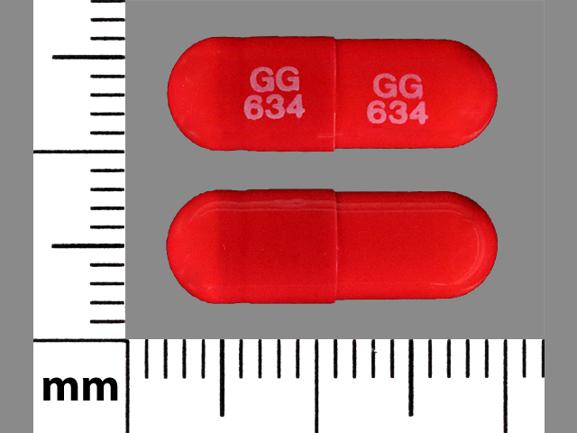Amantadine Disease Interactions
There are 7 disease interactions with amantadine.
- Psychoses/depression
- Renal dysfunction
- Seizure disorders
- CHF/edema
- Hypotension
- Hypotension
- Psychosis
Amantadine (applies to amantadine) psychoses/depression
Major Potential Hazard, Moderate plausibility. Applicable conditions: Psychosis, History - Psychiatric Disorder, Alcoholism, Drug Abuse/Dependence
Amantadine may precipitate or exacerbate psychotic symptoms. Rarely, suicide attempts and suicidal ideation have also been reported, some of which occurred in patients with no prior history of psychiatric illness who were taking short courses of amantadine for influenza. Therapy with amantadine should be administered cautiously in patients with a history of psychiatric disorders, emotional instability, or substance abuse, and particularly if they are elderly. It may be prudent to refrain from dispensing large quantities of amantadine to these patients to prevent intentional overdose, which is potentially fatal.
Amantadine (applies to amantadine) renal dysfunction
Major Potential Hazard, High plausibility.
Amantadine is primarily eliminated by the kidney. Patients with renal impairment may be at greater risk for adverse effects from amantadine due to decreased drug clearance. Therapy with amantadine should be administered cautiously in patients with renal impairment. Dosage adjustments are recommended for patients with moderate to severe renal dysfunction.
Amantadine (applies to amantadine) seizure disorders
Major Potential Hazard, Moderate plausibility. Applicable conditions: Seizures
Amantadine may rarely precipitate or exacerbate seizure activity. Patients with epilepsy or predisposed to seizures should be monitored closely for increased seizure activity during therapy with amantadine.
Amantadine (applies to amantadine) CHF/edema
Moderate Potential Hazard, Moderate plausibility. Applicable conditions: Congestive Heart Failure, Fluid Retention
Amantadine may occasionally cause peripheral edema and, rarely, congestive heart failure. Patients with edema or congestive heart failure should be monitored closely for exacerbation of their condition. Dosage adjustments may be necessary.
Amantadine (applies to amantadine) hypotension
Moderate Potential Hazard, Moderate plausibility.
Amantadine may occasionally cause orthostatic hypotension. Patients with hypotension should be monitored for exacerbation of their condition during therapy with amantadine. Dosage adjustments may be necessary, and patients should be advised not to rise abruptly from a sitting or recumbent position.
Dopamine agonists (applies to amantadine) hypotension
Moderate Potential Hazard, Moderate plausibility.
Dopamine agonists may impair the systemic regulation of blood pressure, with resultant orthostatic hypotension at any time, but especially during dose escalation. Additionally, patients with Parkinson's disease may have an impaired capacity to respond to an orthostatic challenge. For these reasons, patients with Parkinson's disease (or restless legs syndrome) who are being treated with dopaminergic agonists typically require careful monitoring for signs/symptoms of orthostatic hypotension, especially during dose escalation, and should be advised of this risk.
Dopaminergic antiparkinsonian agents (applies to amantadine) psychosis
Moderate Potential Hazard, Moderate plausibility.
Ordinarily, patients with major psychotic disorder should not be treated with dopaminergic antiparkinsonian agents, because of the risk of exacerbating psychosis. Hallucinations and psychotic-like behavior have been reported with dopaminergic medications. In addition, certain medications used to treat psychosis may exacerbate the symptoms of Parkinson's disease and may decrease the effectiveness of these drugs. The use of bromocriptine in patients with severe psychotic disorders is not recommended.
Switch to professional interaction data
Amantadine drug interactions
There are 131 drug interactions with amantadine.
More about amantadine
- amantadine consumer information
- Check interactions
- Compare alternatives
- Pricing & coupons
- Reviews (59)
- Drug images
- Side effects
- Dosage information
- Patient tips
- During pregnancy
- Support group
- Drug class: adamantane antivirals
- Breastfeeding
- En español
Related treatment guides
Drug Interaction Classification
| Highly clinically significant. Avoid combinations; the risk of the interaction outweighs the benefit. | |
| Moderately clinically significant. Usually avoid combinations; use it only under special circumstances. | |
| Minimally clinically significant. Minimize risk; assess risk and consider an alternative drug, take steps to circumvent the interaction risk and/or institute a monitoring plan. | |
| No interaction information available. |
See also:
Further information
Always consult your healthcare provider to ensure the information displayed on this page applies to your personal circumstances.


